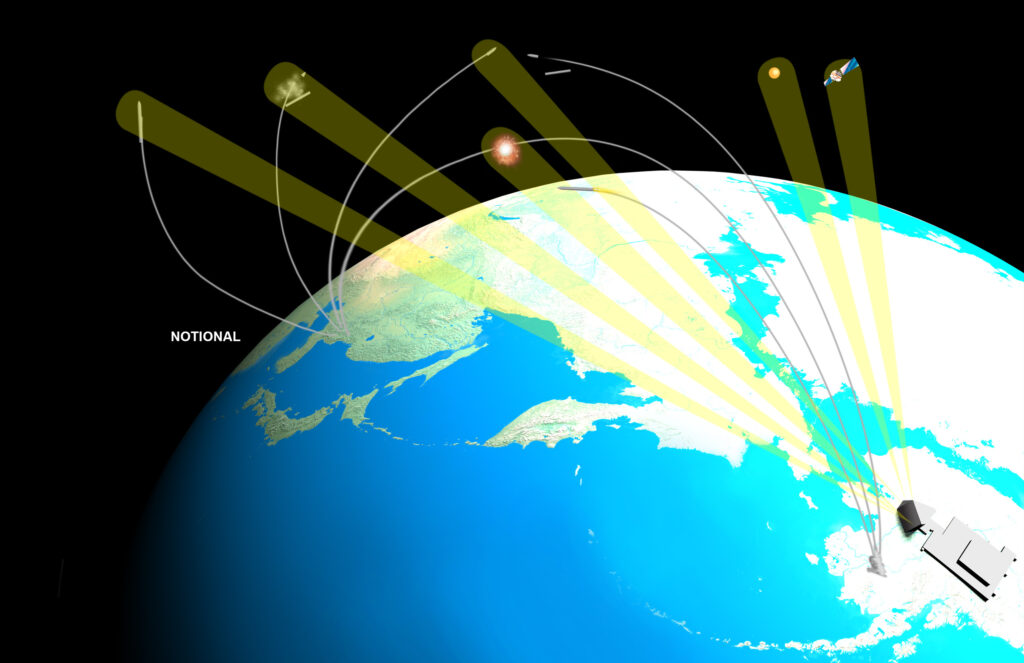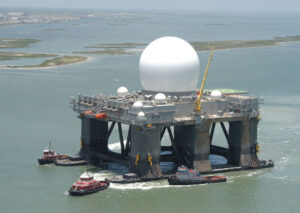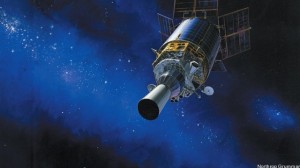STRATCOM Wants Space-Based Midcourse Tracking Vs. Missiles: Hyten
Posted on

Minuteman III ICBM “reentry vehicle” (which carries the nuclear warhead) reentering the atmosphere.
ASSOCIATION OF THE US ARMY: After 30 years of trying, the head of Strategic Command believes the time and technology are finally ripe for satellites to track both ballistic missiles and emerging threats such as hypersonics.

Gen. John Hyten
“I’ll talk about it with Congress over the next couple of weeks,” Gen. John Hyten told reporters here at AUSA’s annual missile defense conference. “I’ll advocate for that mid-course element of a surveillance architecture” alongside existing early warning radars — which spot the initial launch — and surface-based radars — which are best suited to tracking the latter phases of a missile’s flight.
Mid-course tracking satellites are still a concept under study, not a funded program, but Hyten wants to move ahead much faster: “We ought to build those sensors, and I think we can do it affordably.”
“There’s a lot of (skepticism) about the technical feasibility and the cost …and those are valid concerns,” Hyten admitted. “But I think we’re ready now. I believe General Greaves, the director at MDA (Missile Defense Agency), thinks we’re ready.”
Hyten is a four-star general now, but as a young Air Force captain in 1989, he worked on sensors for what was called the Strategic Defense Initiative. Even then, he was convinced that ground-based radars couldn’t see far enough: The horizon generally gets in the way until the incoming warhead is in the final phase of its flight. Conversely, infrared sensors in very high geosynchronous orbits, the Defense Support Program satellites, can spot the heat of a ballistic missile launch anywhere on earth and provide early warning — but when the rocket booster shuts off and fell away, they can’t track where the warhead went. The only way to track the “reentry vehicle” in between launch and final approach, during the mid-course of its flight, was a new kind of satellite, the young Hyten and his colleagues decided.

The groun-based Long-Range Discrimination Radar will be better able to tell apart different types of targets, but its coverage is still limited by the curve of the earth, as illustrated here.
“You can’t put (terrestrial) radars close enough to see things early on, you can only see that from space,” Hyten told reporters. Space-based sensors have worked for early warning for 50 years, so “we have an architecture today that sees every launch until burnout,” he said. “We can build sensors now that can see the rest of the trajectory.”

Sea-Based X-Band Radar (SBX-1)
Yes, space-based mid-course tracking will be expensive, Hyten admitted — but less expensive, he argued, than the billions we’ve spent on ground- and sea-based radars for a system that still suffers significant gaps in coverage. Those radars will always be an essential part of the missile defense system, he emphasized, covering the final approach, but we’ve been asking them to do something they’re not suited for, namely mid-course tracking. “There aren’t enough ships, there’s not enough islands in the Pacific” to put radars on to cover the potential flight paths, he told the AUSA conference. If you try, he said, you end up spending even more money than space-based sensors would cost and getting much worse coverage.
“I think we can do this affordably. The technology is there,” Hyten told reporters. “We have to make sure we control the requirements (the official wishlist of what a new system must do). We have to keep them simple. But…I can sit down with three smart guys and come up with the requirements right now and be done and get on with it — and I think it’s time to get on with it.” Running requirements through service and joint staffs for approval can take three years, Hyten said, but Vice-Chairman of the Joint Chiefs Paul Selva can cut that to three months.

Defense Support Program early warning satellite
That kind of speed needs to become routine, rather than a special exception, Hyten said, as the military struggles to keep up with advancing technology and inventive adversaries. Once, the military empowered mid-grade officers to innovate and take risks, Hyten said, with the nation’s first spy satellite program (for example) suffering 13 failures in a row before its epochal success. Now, between congressional oversight and Pentagon bureaucracy, the system has become risk averse and sluggish.
“My biggest concern…is that in so many places, we’ve kind of lost the ability to go fast,” Hyten said. “Oh my gosh, we take forever to do anything any more, and our adversaries are not suffering the same problem.”
Subscribe to our newsletter
Promotions, new products and sales. Directly to your inbox.
